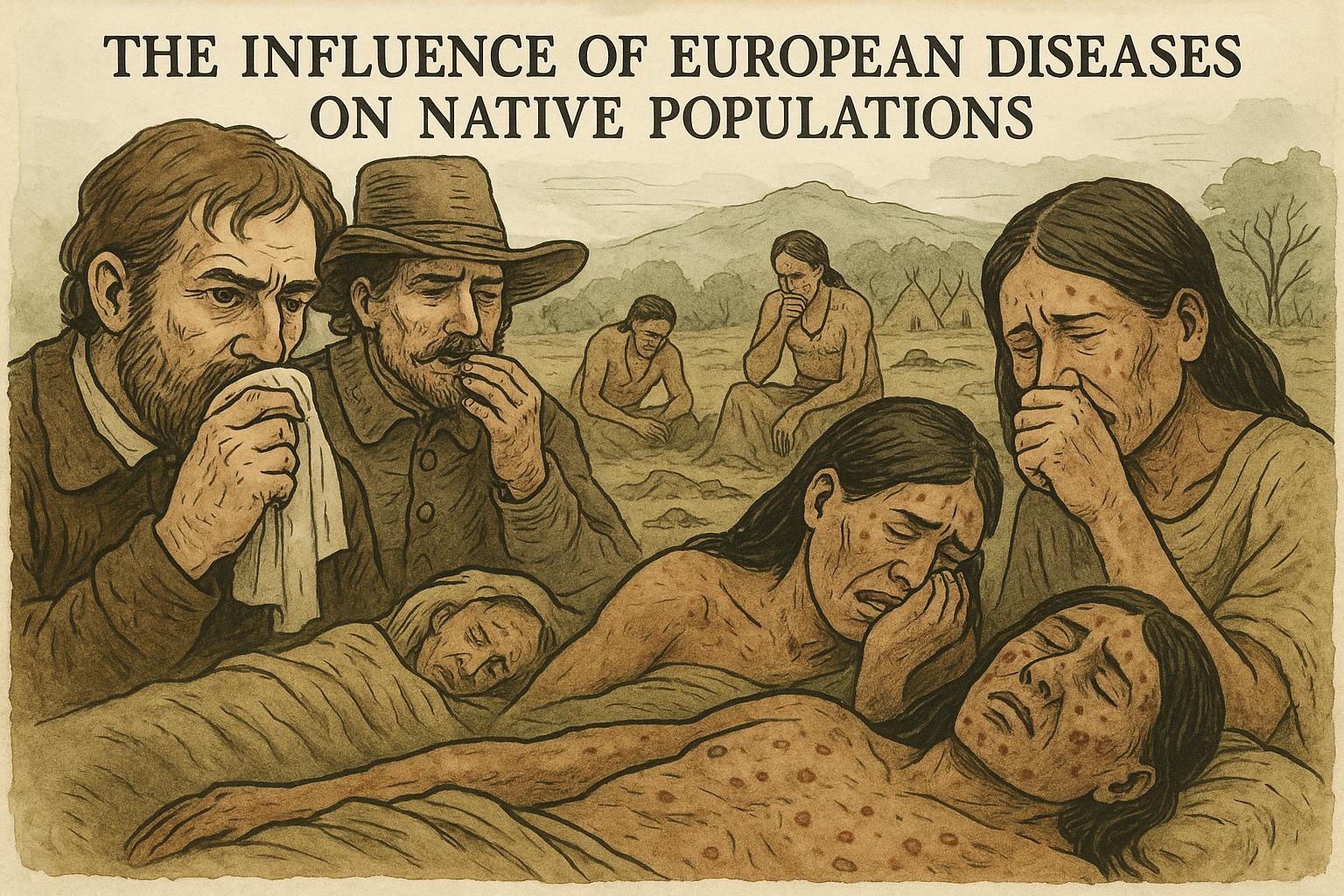The Introduction of European Diseases to Native Populations
The arrival of European explorers, settlers, and colonizers in the Americas and other regions around the world significantly impacted indigenous populations. One of the most profound and devastating aspects of this encounter was the introduction and spread of European diseases. This exchange of pathogens drastically influenced societal structures, demographic patterns, and cultural landscapes.
Diseases Introduced by Europeans
When Europeans first arrived in the New World and other territories, they carried with them a range of infectious diseases. Many of these illnesses, such as smallpox, measles, and influenza, were unknown to native populations and thus were particularly virulent due to the lack of acquired immunity among indigenous peoples. Smallpox, notorious for its high contagion and mortality rates, emerged as one of the deadliest diseases. Introduced inadvertently by European settlers, it spread swiftly through communities with devastating outcomes. Measles and influenza followed similar patterns, contributing to widespread morbidity and mortality.
The Impact on Population and Society
The introduction of these diseases led to an immediate and far-reaching impact on indigenous communities. The dramatic decline in population numbers weakened the capacity of native groups to resist European expansion and conquest. This demographic collapse effectively facilitated the colonizers’ efforts to dominate and control new territories.
The social structures of indigenous societies were severely disrupted as well. Family units were decimated, traditional practices were interrupted, and the transmission of cultural and practical knowledge was severely hindered. As community leaders, elders, and knowledge bearers succumbed to illnesses, the continuity of cultural and societal norms faced profound challenges.
Furthermore, the demographic imbalances gave rise to significant changes in land use and occupation. Vast areas of land previously managed or inhabited by indigenous peoples became available for European settlers. This shift not only altered the physical geography but also replaced native agricultural and social practices with those of the Europeans.
Factors Contributing to the Spread
Multiple factors facilitated the swift spread of diseases among native populations. The communal living arrangements of many indigenous groups, characterized by dense residential patterns, created an environment conducive to the transmission of infectious diseases. In stark contrast, Europeans had existed alongside these pathogens for centuries and had developed certain levels of immunity, something the indigenous populations lacked entirely.
Additionally, extensive trade networks and movements, both among indigenous groups and between them and Europeans, served as channels for the wider spread of diseases. Previously, these trade routes had connected various cultures and facilitated the exchange of goods and ideas. However, post-contact, they inadvertently turned into pathways for the transmission of deadly pathogens, thereby extending the reach of diseases far beyond the initial points of contact.
Response and Long-term Effects
Faced with unprecedented crises, some indigenous communities endeavored to respond to the outbreak of diseases through available means—primarily traditional healing practices. However, given the novelty and virulence of imported diseases like smallpox, these approaches were often inadequate.
Over time, surviving members of affected populations began to develop a certain degree of partial immunity, allowing for the gradual resurgence of their numbers. However, the initial population collapses led to enduring cultural and societal consequences. The loss of life translated into an irreversible loss of language, culture, and traditional knowledge, creating long-lasting cultural gaps.
The long-term effects resonate in contemporary society, where many indigenous communities continue to grapple with the legacy of these historic events. The erasure of cultural practices and the disruption of traditional ways of life have lasting socio-economic and political implications for indigenous populations around the world.
In examining the historical narrative surrounding the introduction of European diseases to native populations, one recognizes a multifaceted tapestry involving biological encounters, cultural exchanges, and economic ramifications. Such an understanding honors the strength and resilience demonstrated by indigenous communities during one of the most challenging epochs in their history. It encourages further exploration into the interplay between disease transmission and cultural endurance, fostering greater appreciation and awareness of the historical resilience and ongoing struggles of indigenous peoples. Those interested in a more detailed exploration of these dynamics are encouraged to seek academic resources and literature that provide deeper analyses and narratives of these impactful historical events.

